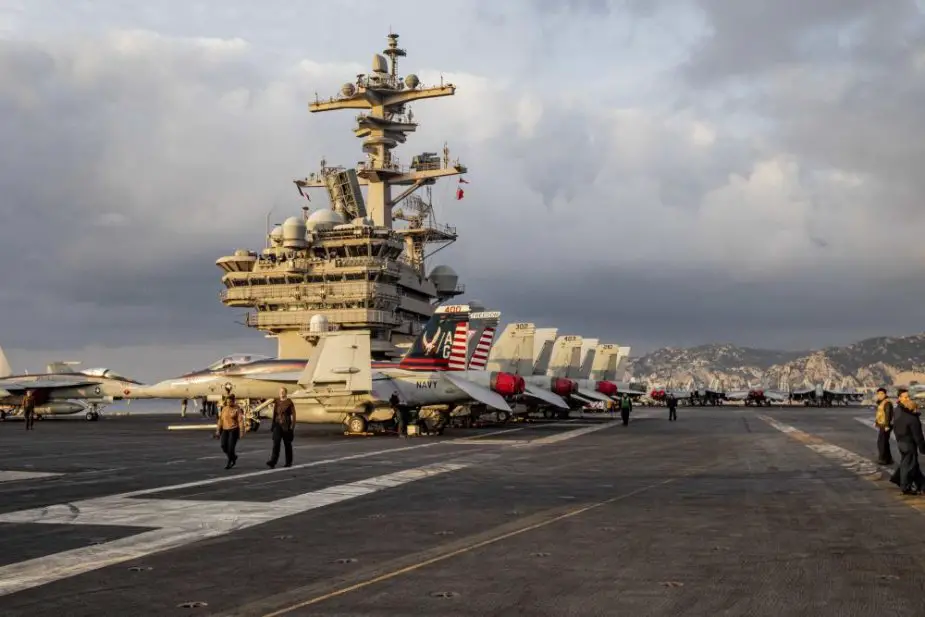Breaking news
US aircraft carrier George H.W. Bush visits Marseille in France.
According to a tweet published by the US DoD on December 29, 2022, the aircraft carrier USS George H.W. Bush and USS Nitze arrived in Marseille, in the South of France.
Follow Navy Recognition on Google News at this link
 The Nimitz-class aircraft carrier USS George H.W. Bush, along with the embarked staff of Carrier Strike Group 10, arrives in Marseille, France. (Picture source: DVIDS)
The Nimitz-class aircraft carrier USS George H.W. Bush, along with the embarked staff of Carrier Strike Group 10, arrives in Marseille, France. (Picture source: DVIDS)
USS George H.W. Bush (CVN-77) is the tenth and final Nimitz-class supercarrier of the United States Navy. She was completed in 2009 at a cost of $6.2 billion and her home port is Naval Station Norfolk, Virginia.
George H.W. Bush measures 1,092 feet (333 m) and displaces over 100,000 tons, making her one of the world's largest warships (though she is slightly shorter than the USS Enterprise). Her top speed exceeds 30 knots; powered with two nuclear reactors, she can operate for more than 20 years without refueling.
The flight deck is angled at nine degrees, which allows for aircraft to be launched and recovered simultaneously. This angle of the flight deck was reduced slightly in relation to previous carriers, as the current design improves the air flow around the carrier. Four steam catapults are used to launch fixed-wing aircraft, and four arrestor wires are used for recovery.
New features include a bulbous bow design that provides more buoyancy to the forward end of the ship and improves hull efficiency, curved flight deck edges to reduce radar signature, a new underwater hull coating system, deck modernized coverings to reduce ship weight by 100 tons, low solar absorptive and anti-stain paint, a less cluttered hangar bay, and a new propeller design.
George H.W. Bush is the second carrier to have a modernized island, which includes a new radar tower (enclosed to reduce radar signature), navigation system upgrades, communication systems enhancements, and armored windows. The island is smaller and has been repositioned further aft to improve flight deck access and reduce signature and electronic self-interference.
New air operations design features include an updated aviation fuel storage and distribution system, semi-automated refueling and servicing with new deck locations to provide faster, more efficient aircraft pit stops, requiring fewer people, modernized aircraft launch, and recovery equipment, and redesigned jet blast deflectors.
Environmental upgrades have also been designed into the ship, including a vacuum collection/marine sanitation device (VC/MSD), a new marine sewage system that uses sea water in lieu of fresh water for lower maintenance costs.





























